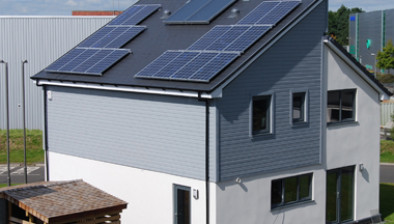New data highlights build-to-rent gap between Scotland and UK regions

The significant gap between the number of purpose-built rental properties in Scotland and those being constructed in different English regions has been highlighted in a new report.
According to the Scottish Property Federation (SPF), figures at the end of Q1 2018 show that for every build-to-rent (BTR) home in Scotland, North West England has nearly 10.
The research, compiled by Savills on behalf of the British Property Federation, calculated that Scotland currently has 3,365 BTR homes complete, under construction or in planning. In comparison, the North West has 29,600, the South East (excluding London) 7,101, the West Midlands 6,378 and Yorkshire and The Humber 5,131.
Across all areas of the UK including Scotland, the data shows that this sector of the housing market has grown by 30% in the past year.
In the UK there are now 117,893 BTR homes across all stages of the development lifecycle, compared to the total of 90,761 homes at the end of Q1 2017.
As the BTR sector continues to grow, it has also been able to diversify its offer – with 17% of schemes in the pipeline including houses, rather than just typical high-rise apartments.
While Scotland currently accounts for just under 3% of the total pipeline, there are signs that this is set to increase significantly – particularly in Glasgow.

SPF director, David Melhuish, said that while the figures are a stark reminder of how far Scotland lags behind the rest of the UK for new BTR properties, they also show a shift in gear for BTR in Scotland and indicate how attitudes to renting are changing.
He said: “Build-to-rent has historically been characterised as simply a step up from student accommodation for millennials, but this is now changing. The sector’s growth means it can cater for a wider range of people, including families. These purpose-built rental properties are high-quality, often with linked amenities, sustainably constructed and well-managed intergenerational homes.
“As a result, there is now a significant shift in perception and we are beginning to see changes here in Scotland, which will help boost further BTR development.
“Investors want assets which are going to provide returns over the long term, which drive up quality; architects and planners have the opportunity to create a built environment for communities; and local authorities are beginning to understand how BTR could tackle brown field sites, support new infrastructure development and be a catalyst for further development.”
David added: “In Scotland, there has been a promising boost in the number of BTR homes, with 3,365 homes now at varying stages of the development process. The numbers are still not high in comparison to the rest of the UK, but there are now multiple sites in Glasgow which should act as a spur to other BTR projects across the country.
“BTR is an opportunity and Scotland has some important advantages for attracting the investment necessary – the Rental Income Guarantee Scheme being one and an exemption from the 3 per cent second homes tax for large-scale PRS investments is another. With planning policy guidance now amended to support BTR developments, particularly around the treatment of development viability, there is no reason why we cannot see the BTR sector provide a new catalyst of economic growth in our cities.”
An interactive map showing all UK development sites can be viewed here.









